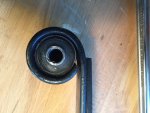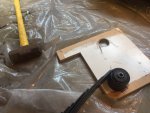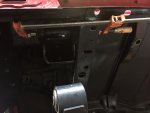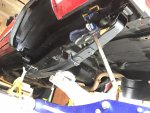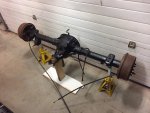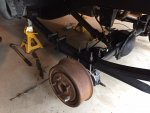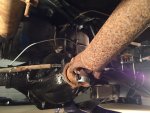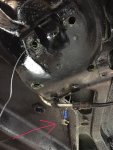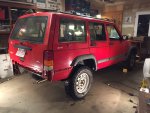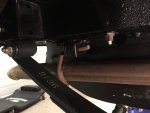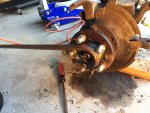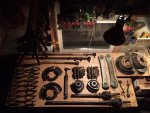Anak
Stranger
The press worked well even though I was deforming the large washers under pressure. By the time the bushing was half way into the leaf spring, I need to use a breaker bar to apply enough force to keep advancing the nut along the threaded rod. Ultimately I broke the threaded rod, twice. I'll have to give it another go with some 1/2" rod but I don't have any on hand. I measured the inside of the bushing with calipers and 1/2" rod should juuuuust fit. I hope.
View attachment 398079
I don't think you will have any problem fitting a 1/2" rod through there. The factory bolts are 14mm. A 9/16" rod should fit. In the unlikely event that you get to choose thread type you will be best off with Acme threads. Of course you will also need Acme nuts to go with that. Life will also be easier if you lube the threads. Anti-seize makes an excellent lubricant (and given your climate you should be using anti-seize liberally on most of the hardware).
I do think you will have a problem getting the bushing all the way in with your setup as pictured. The bushing should be wider than the leaf spring, probably by about 1/2". You need some sort of receiver cup on the bottom side of that arrangement. The simplest solution is probably a large 1/2" drive socket. Large enough that the bushing can just fit inside it. And a 1/2" drive socket should still accommodate your 1/2" rod. Finding a socket to clear that front bushing may not be possible though. BFH?
For washers, look for thick washers, hardened washers or just take a couple pieces of 1/4" thick steel and drill 1/2" holes through them. They don't have to be round, just large enough to distribute the weight out to the perimeter of the bushing and of the socket.

